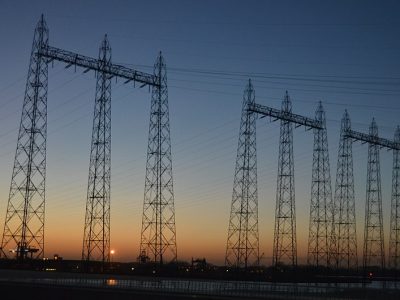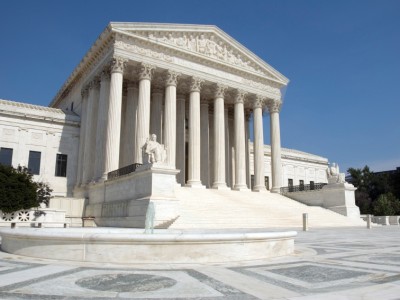Search Results for: feed
Guest Contributor Naomi Wheeler: States and Cities Should Prioritize Equity While Building Grid Resilience
Learning from Grid Resilience Threats and Opportunities in California and New York
Electrical grids across the country face a complex series of overlapping threats to grid resilience in 2020. Wildfires and hurricanes have become the new normal as climate change intensifies the magnitude of extreme weather events. These destructive events create widespread systemic shocks for electrical grids already facing several underlying vulnerabilities. In a recent research report, …
CONTINUE READINGAutomakers Love to Use the Great Outdoors to Sell Cars That Pollute National Parks
Auto companies continue campaign against progress on vehicle pollution
At the top of Franklin Pass last week, 11,710 ft above sea level and deep in Sequoia National Park, I stopped to catch my breath. There’s no doubt the altitude was affecting me, but looking back towards the thick inversion layer sitting over the western San Joaquin Valley, I had to wonder to whether pollution …
CONTINUE READINGManaging a Pandemic, Enron-Style
The Administration’s management harkens back to a spectacular business collapse at the turn of the century.
Think of this as a parable. I’ll draw out some parallels at the end with the Trump Administration’s handling of the coronavirus, as detailed in a story in Sunday’s Washington Post. But first I’ll let you make some of the connections yourself. The Trump team’s triumph in 2016 was one of the great upsets in …
Continue reading “Managing a Pandemic, Enron-Style”
CONTINUE READINGBP’s Surprising Pivot
An oil giant decides to face the future instead of fighting it.
With all that’s going on, it’s easy to miss what would in normal times be major news. On Tuesday, BP announced it was beginning to turn away from the oil business. The most significant thing may be this: BP stock rose after the announcement. BP has already sold its petrochemical business. It also announced that …
Continue reading “BP’s Surprising Pivot”
CONTINUE READINGWe All Have a Role in This Fight
Those who fight for the environment must fight for racial justice, as well.
All people have a moral obligation to express outrage about the disgraceful violence against African Americans and about the systemic racism that feeds it. Even more so if one considers oneself to be an environmentalist. A key component of an ecological perspective is an understanding of the interconnection of all living things. Violence against some …
Continue reading “We All Have a Role in This Fight”
CONTINUE READINGWhat’s in a Name?
“Climate change”? “Disruption”? “Crisis”? “Emergency”? Why is this so hard?
We seem to have a lot of trouble in coming up with the right name for what’s happening to the world’s climate. We started with “Global Warming.” But that seemed too narrow, because the changes don’t just relate to temperature, and too innocuous, because warming seems like a gentle process. So scientists shifted to “Climate …
Continue reading “What’s in a Name?”
CONTINUE READINGThe Coronavirus and the Commerce Clause
Could Congress mandate CORVID-19 vaccinations? Not if you take some Supreme Court opinions seriously.
If we get a vaccine against a national epidemic, could Congress pass a law requiring everyone to get vaccinated? That very question was asked during the Supreme Court argument in the 2012 constitutional challenge to Obamacare’s individual mandate. The lawyer challenging Obamacare said “no, Congress couldn’t do that.” What’s shocking is that this may have …
Continue reading “The Coronavirus and the Commerce Clause”
CONTINUE READINGThe SAFE Rule: Sham Acronyms Foul Environment
Some Possible Replacement Phrases for the Trump Administration Rollback
In the original proposal to eviscerate national car standards to reduce carbon pollution, the Trump Administration used a made-up justification: lower standards would lead to safer cars. Hence the Administration originally named the rollback of the standards the “SAFE” Rule. SAFE stands for “Safer Affordable Fuel Efficient” Vehicle Rule. But the justification was a sham. …
Continue reading “The SAFE Rule: Sham Acronyms Foul Environment”
CONTINUE READINGHow Hot Will Things Get?
Identifying a realistic worst case scenario is complicated.
How hot will the world be in 2100? The answer partly depends on how much carbon we dump in the atmosphere between now and then. It also depends on how sensitive the climate system is to those emissions. Scientists have used 4.5 °C as the high end of the likely possibilities. That estimate derives from …
Continue reading “How Hot Will Things Get?”
CONTINUE READINGLessons of the Little Ice Age
What can we learn from the climate disruptions of the previous millennium?
The Little Ice Age wasn’t actually an ice age, but it was a period of markedly colder temperatures that began in the 1200s and lasted into the mid-1800s, with the 1600s a particular low point. It was a time when London winter fairs were regularly held on the middle of a frozen Thames river, glaciers …
Continue reading “Lessons of the Little Ice Age”
CONTINUE READING











